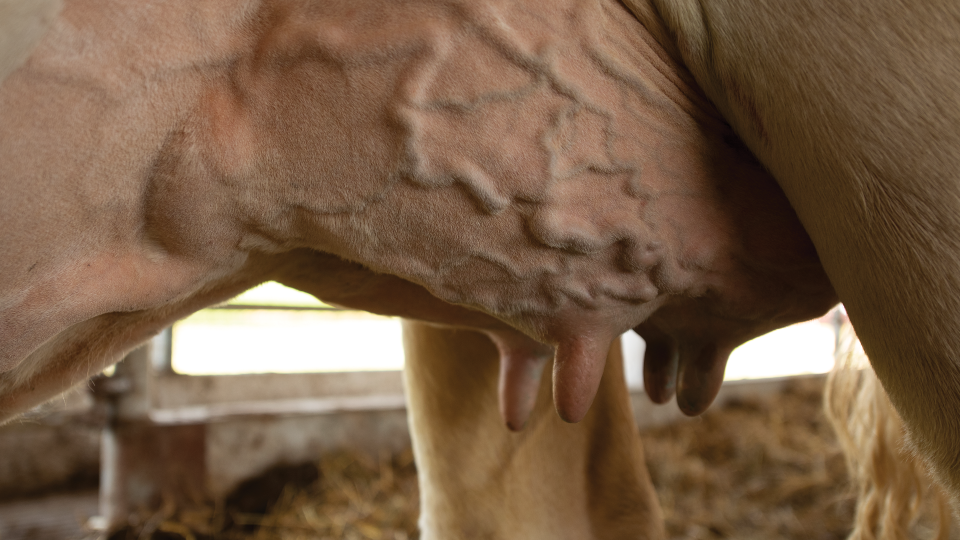Know the unknowns for successful mastitis treatment
By Dr. Lowell T. Midla
When it comes to mastitis treatment, many factors impact its effectiveness. While we know some of those variables, there are many unknowns. Understanding known and unknown variables will help uncover the best treatment decisions for each cow.
Dr. Pamela Ruegg, professor of large animal clinical sciences at the Michigan State University College of Veterinary Medicine, recently summarized research-based evidence related to clinical mastitis treatment.1 Research findings over many years and under a variety of management practices provide insights into what we know about mastitis and the effectiveness of treatment.

What we do know:
- Mastitis treatment products have similar efficacy.
With rare exceptions, researchers report few significant differences between approved intramammary (IMM) antibiotics in achieving bacteriological or clinical cure rates. Therefore, producers may consider other product characteristics to make treatment decisions. These might include treatment duration and total time that the milk must be withheld, slaughter withdrawal time, product cost and other considerations.
- Normal milk is not a reliable indicator of effectiveness.
Producers sometimes judge treatment success based on milk returning to a normal appearance. However, this outcome is not a good indicator of therapeutic success. A bacteriological cure – or the elimination of bacteria – often occurs well before milk returns to normal. Even with effective treatment, inflammation can remain in the quarter and cause abnormal milk for several days after bacteria have been eliminated.
- Don’t forget the difference between cow-level and quarter-level somatic cell count (SCC).
While quarter-level SCC is a reasonably accurate metric of treatment success, cow-level SCC is an “average” of four quarters – so cow-level SCC is a poorly sensitive way to assess treatment success in any one of those quarters.
What we often don’t know, but could (and should):
Too often, treatment decisions are based on “knowable” unknowns or on assumptions that may or may not be true. Taking steps toward more thorough mastitis evaluation and better recordkeeping can provide useful information to guide treatment decisions. Below are examples of how in-depth investigations could turn “unknowns” into “knowns,” thereby potentially improving mastitis treatment success.
- Identify the cause of mastitis before treatment.
If milk culture results can be obtained within 24 hours, then treatment decisions can be pathogen-based. Remember, cases of mastitis that are culture negative or that are caused by Gram-negative organisms rarely benefit from IMM antimicrobial therapy. Therefore, not treating cases of mild mastitis with signs confined to the mammary gland that are culture negative or caused by Gram-negative organisms with an IMM antibiotic results in both treatment cost savings and decreased selection for resistant organisms.
Although there are few differences in cure rates between IMM antibiotics when evaluated against all pathogens, producers may want to work with their veterinarian to select treatments based on spectrum of activity against specific Gram-positive pathogens.
If milk culture results cannot be obtained in 24 hours, consider collecting and immediately freezing milk samples from a subset of clinical cases prior to treatment. Give these samples to your veterinarian for culturing. This provides useful insight into the prevalence of each of the mastitis-causing pathogens in your herd and serves to monitor for particularly troublesome pathogens like Staphylococcus aureus.
In cases where treatment is initiated prior to or without the results of milk culture, the default treatment should be short-duration therapy with an antibiotic that has outstanding Gram-positive coverage. The default treatment should not be extended therapy without the benefit of a bacteriological diagnosis.
- Don’t rely solely on past experience.
The most common reason cited by producers for choice of a specific IMM treatment product is: “It worked before.” This selection criterion may not always be accurate, particularly since most clinical cases spontaneously cure regardless of treatment.
Keep in mind also that human memory is fallible, and that we tend to remember and place much greater weight on single, clinically severe cases we did not expect to cure but did, as well as clinically mild cases that we expected to cure but did not. We may come to a different conclusion regarding effectiveness of a given treatment after objective analysis of actual treatment results. Nearly all farms could benefit from keeping more complete treatment records and carefully evaluating those records to determine product efficacy.
- Accurately measure culling due to mastitis.
On many farms, the true “reason for culling” is difficult to determine from the records. Better recordkeeping systems could help evaluate failures to cure that lead to culling, potentially influencing future treatment decisions.
What we don’t know:
- Consider length of infection.
Mastitis caused by Staphylococcus aureus generally has a low cure rate. Depending upon the prevalence of S. aureus in the herd (identified through regular culture-based monitoring), producers should strongly consider culling infected cows. When attempting treatment, success depends somewhat upon how long the infection has been in the mammary gland.
If a cow was infected with S. aureus five minutes ago, it is reasonable to assume antimicrobial therapy is more likely to achieve a cure than if she was infected five months ago. While it’s impossible to know how long a quarter has been infected, it is possible to guess based upon age of the cow, stage of lactation, somatic cell count history and other factors.
After your next herd check, discuss each of the preceding knowns and unknowns with your veterinarian and how they apply to your dairy. Thoughtfully and deliberately consider how to apply what is known about mastitis with reasonable certainty (the known knowns), as well as how to turn your unknowns into knowns.
References
- Ruegg, P. What is Success? A Narrative Review of Research Evaluating Outcomes Used for Treatment of Clinical Mastitis. Front. Vet. Sci. 2021; Vol. 8, Article 639641.
Find more content for your dairy operation.
About the author

Dr. Lowell T. Midla, V.M.D.
Dairy Technical Services, Merck Animal Health
